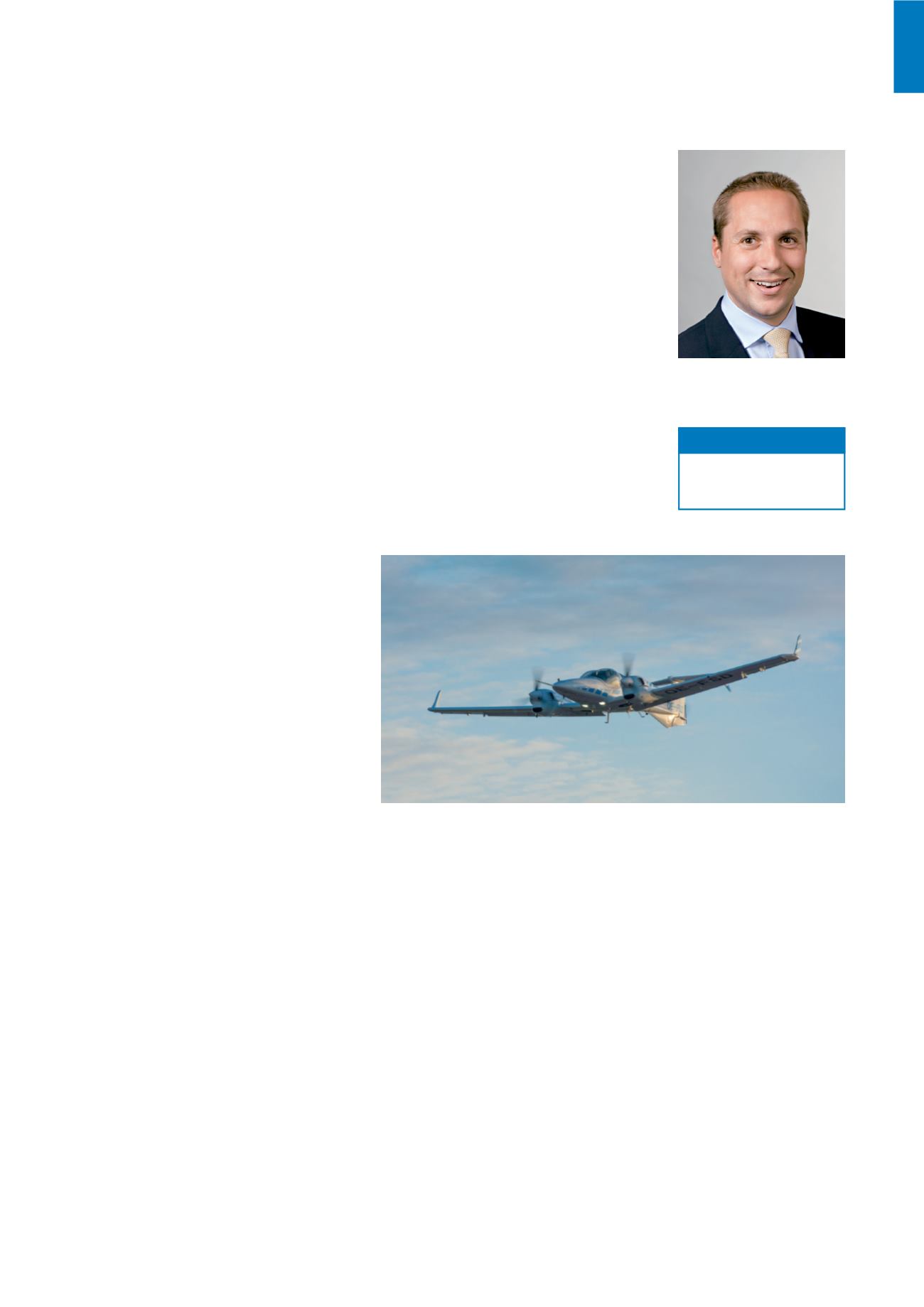

Flight System Dynamics
145
Flight System Dynamics
Making innovations fly in certified products of small and medium-sized aerospace companies
Prof. Dr.-Ing.
Florian Holzapfel
Flight Guidance and Flight Control
Modern flight guidance and control
systems need to fulfill the growing
requirements for safety, performance and
autonomy in order to comply with cus-
tomers’ needs. To this end, novel methods
and concepts are being developed at TUM
FSD for manned as well as for unmanned
aerial vehicles. The practical relevance
of the results for specific applications is
guaranteed through continuous evaluation
of the research during flight tests.
The Flight Control and Flight Guidance
Group has developed an integrated
auto-flight control system incorporating
automatic landing and take-off, waypoint-
based trajectory flight, autopilot function-
alities and direct law fly-by-wire algo-
rithms. In 2016, the developed algorithms
were successfully tested in flight with the
institute’s DA42M-NG aircraft and even a
complete automatic mission comprising
take off, flight-plan flying and landing
was performed. Together with industry
partners, the same core auto-flight
control system was successfully adopted,
integrated and tested in flight for a larger
CS-23 aircraft (Do 228) and an electrically
powered ultra-light class aircraft.
Using novel adaptive control algorithms,
the physical limits of a quadrotor platform
subject to unknown faults within one motor
have been tested. Successful flights have
shown the stability of the system at high
yaw rotational rates in a degraded con-
figuration. The flight control group is also
working on the development of a unified
baseline controller for a hybrid unmanned
aerial vehicle. Instead of switching between
different controllers during the transition
phase from hover to wingborn flight, the
new controller concept is applicable to the
entire flight envelope.
Building on the success of the com-
pleted research projects, the institute
has acquired a new collaboration with
an industry partner for an active involve-
ment in the development process of a
commercial airliner. Furthermore, there
are ongoing negotiations with another
commercial aircraft manufacturer. Project
results and research findings have been
presented at AIRTEC 2016 and various
scientific conferences.
n
As part of the Technical University of Munich Department of Mechanical
Engineering, we are devoted to analyzing and modifying the dynamic
characteristics of aerial platforms. Our passionate team is committed to
mature cutting-edge technologies that are required to incept the flight
system behavior of tomorrow.
During the last years we have acquired all
the experience which is needed along the
whole process of making control ideas
fly. This includes modeling and system
identification, controller design and
implementation in real aircraft.
Our research areas are presented in
the following sections. The research
infrastructure includes several flight
simulators, test rigs, and manned and
unmanned aircraft. We have established
important partnerships and synergies
with top research institutions and leading
industrial players in the field of aerospace.
Our ultimate goal is the development and
the application of innovative approaches
tailored to real-world applications and
products, as well as to the demanding
challenges of tomorrow.
www.fsd.mw.tum.de office@fsd.mw.tum.dePhone +49.89.289.16061
Contact
Research airplane Diamond DA-42


















